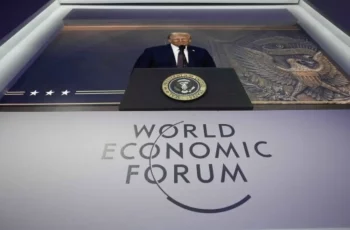
The recent ceasefire declared between Iran and the U.S.-Israel axis might appear to be a temporary pause in escalating tensions. However, it reflects a deeper geopolitical reality: the Islamic Republic of Iran has not only withstood sustained pressure but, in many respects, has seized the strategic initiative.
From the outset of this confrontation, two clear objectives were evident in the strategies of the United States and Israel:
1. Israel aimed to restore its deterrence by targeting Iranian military commanders and scientific elites through precision strikes and assassinations.
2. The U.S. sought to dismantle Iran’s nuclear infrastructure and fragment the political-military cohesion of the Islamic Republic.
Yet the outcome was contrary to their expectations.
Despite a direct attack on Iran’s Fordow nuclear facility—buried deep underground—the damage was minimal. Iran’s nuclear capabilities remained intact, and command structures resilient. In response, Iran launched missile and drone strikes on critical Israeli targets in Haifa, Tel Aviv, and sensitive military installations, effectively challenging the longstanding perception of Israel’s “absolute security.”
Iran demonstrated that:
– It possesses the capability to precisely strike vital infrastructure inside Israel;
– Its internal cohesion, both societal and governmental, remains unshaken under direct threat;
– Without resorting to its regional allies or more escalatory measures like closing the Strait of Hormuz, it can still project credible deterrence.
Perhaps more telling than battlefield dynamics is the psychological and political shift among the key players. For the first time in modern history, a regional state directly targeted U.S. military interests in West Asia—most notably the Al-Udeid Air Base in Qatar. Yet Washington’s reaction was not a retaliatory strike, but a rush toward de-escalation and calls for a ceasefire.
This shift in tone—from threats to mediation—signaled not strategic flexibility, but a recognition of limited options. Only days earlier, U.S. officials were publicly advocating regime change in Iran. After Iran’s direct retaliation, that rhetoric softened dramatically. Former President Donald Trump, for instance, pivoted from inflammatory remarks to calling for peace, stating: “May God protect Iran and Israel.”
This rhetorical reversal suggested not strength, but vulnerability—evidence that when confronted with a serious counterstrike, the U.S. quickly seeks to contain rather than escalate the crisis.
The events of June 24—the very day the ceasefire was to take effect—highlighted the chronic trust deficit between the parties. While a temporary calm was anticipated, Israel again struck Iranian territory. This act reflected a recurring pattern in Tel Aviv’s military conduct: ceasefires are often not a pathway to peace, but tactical pauses used to regroup and prepare for renewed aggression.
This behavior is not unprecedented:
– In the summer of 2014, shortly after a ceasefire agreement in Gaza, Israeli warplanes resumed bombing Palestinian targets within days.
– In May 2021, after 11 days of intense fighting and a declared ceasefire, Israel continued sporadic strikes on Palestinian territories.
– In Lebanon, following the 2006 ceasefire with Hezbollah, Israeli violations of airspace, reconnaissance missions, and even limited strikes became routine.
From Tehran’s perspective, these precedents reinforce the belief that for some Western powers and their allies, “diplomacy” is less a tool for lasting peace and more a tactical cover—used to buy time, reorganize, and retain battlefield initiative.
What has transpired is not merely a series of military exchanges, but a transformation in the security architecture of the region. Iran has weathered aggression and, more importantly, redefined the strategic outlook of West Asia.
As deterrence replaces submission, and retaliation replaces silence, the central question no longer points to Tehran’s intentions—but to Washington’s readiness:
Is the United States prepared to acknowledge the emerging order in West Asia, or will it gamble on a new phase of confrontation—this time, at an even higher cost?










Pingback: The Illusion Of Ceasefire: A Shift In The Balance Of Power In West Asia – Emma Olive